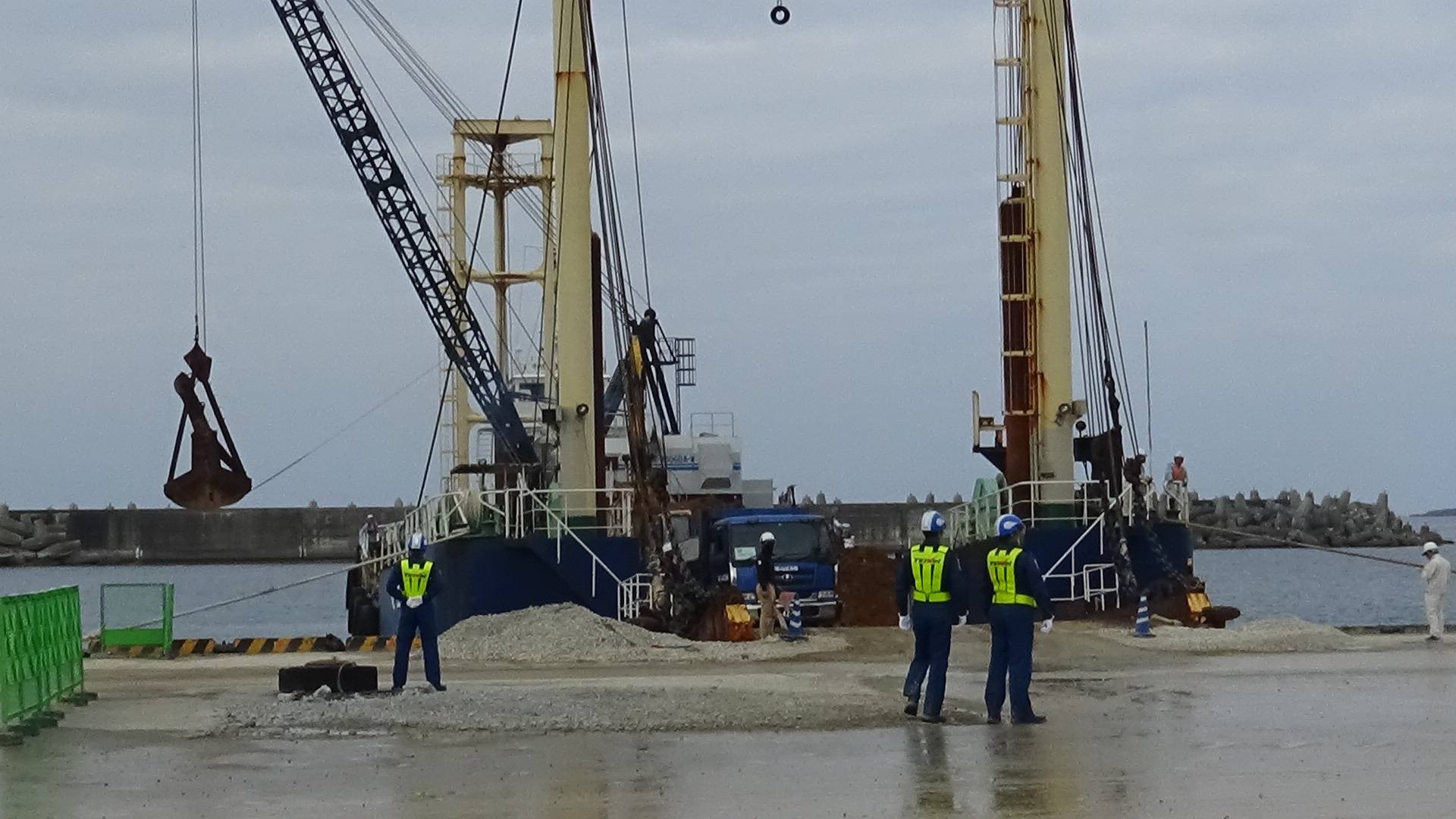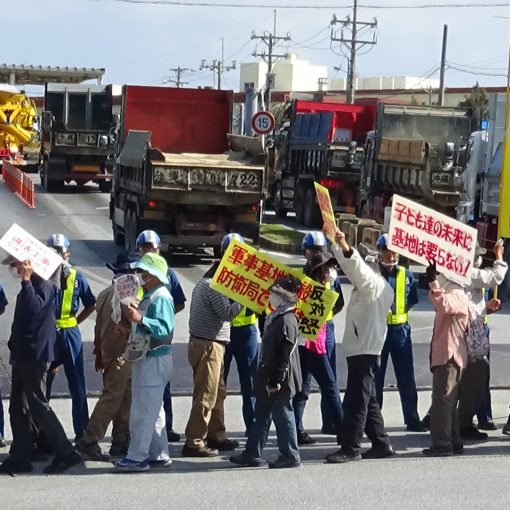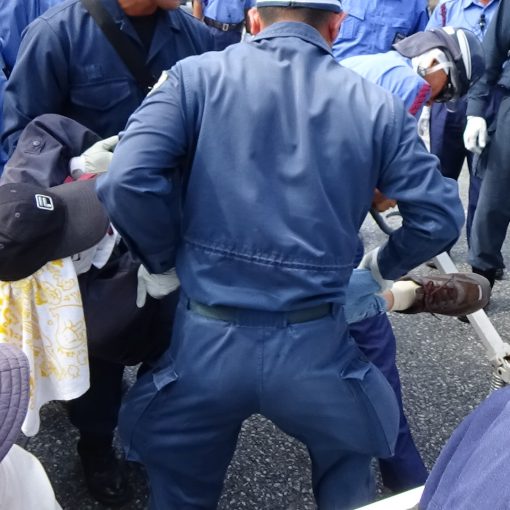At the end of last year, the Japanese government announced a policy change to procure soil and sand for the landfill not from mainland Japan but within the Okinawa Prefecture. The overall volume of earth and sand required for the land reclamation 20.62 million cubic meters, of which only 1% had been thrown in for one year until the end of last year. They plan to procure most of the rest from within the Okinawa Prefecture. A simple calculation yields 100 years required to be finished, but the government claims that the reclamation would be completed in 10 years. If so, they have to increase the speed of pouring earth and sand 10 times faster than now. Besides, if the procurement is limited only from within the prefecture, several thousands of dump trucks, increased from current number of several hundreds, will have to go up and down the streets of the prefecture. “Impossible!” that’s the comments expressed by many protesters in response to the announcement. Although even a lay person can understand that 10 years of the construction period would be impossible, the government dare to insist so without showing any hesitation. In ten years, who in the current administration would take responsibility?

(In front of Camp Schwab Gate)
At 8:30 in the morning, only 14 people had showed up for sit-in. Sometimes, we have such a day. On a day 500 people join, while less than 10 people come on another day. More than 2,000 days of non-violent protests have been continuing in this way without a break. The people of Okinawa often say, “The new U.S. military base is the issue on Okinawa’s future.” If the first US military base since the reversion of Okinawa was built with the approval of the Japanese government, the US force would stay in Okinawa almost forever. Everyone who comes to join the protest is fully aware of it. Therefore, they are desperate. The US military bases, which occupy 14.7% of the land area of Okinawa’s main island, are nothing but an obstacle for Okinawa. “Slow development of economy, child poverty and environmental destruction – all of these are related to the presence of US military bases,” a local newspaper reporter said. He is absolutely right.
Even though the number of protesters would be occasionally shrunk, the action never stops. 171 truckloads of construction materials were carried in today.


(Protest at sea in Oura Bay)
One protest boat and nine canoes went out to sea for protest. We recognized that earth and sand were being unloaded at the K9 seawall and transported to a landfill area by dump trucks. Ready to be detained, we repeatedly went beyond the float and tried to get closer to the barge, but the Coast Guard blocked us to approach. We were detained over and over again and brought back to the beach. The photo shows a barge loaded full of red soil. Seven huge barges like this are operating at Oura Bay.


(In front of the Ryukyu Cement Awa Pier)
Nearly 40 members of the Okinawa Citizen’s Association for Peace (Okinawa Heiwa Shimin no kai) marched in front of the entrance of the pier entrance and delayed the transport by dump trucks. As the trucks arrived from both sides of the road, people had to stand in front of the trucks almost without any break.
Because the pier was not available as Ryukyu Cement needed it for their own business, there was no earth and sand loading to the cargo ship. 684 truckloads of earth and sand were carried to the temporary storage area.

(Shiokawa Pier at Motobu Town)
Eight people kept protesting. No riot police showed up. As only the police officers from the Motobu police station were there to deal with, we could stop the dump trucks for a while, although we were a small group. Nevertheless, they kept working whole day and 438 truck-loads of earth and sand were loaded into the cargo ship.






